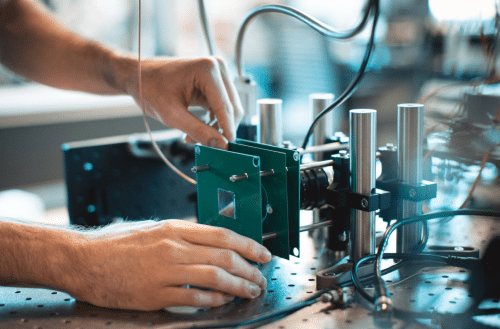Using low-cost LIDAR technology, researchers have successfully demonstrated 3D imaging.
Stanford University researchers have developed a novel method for ordinary image sensors to sense light in three dimensions. With this technology, cameras will be able to estimate the distance between objects, resulting in a three-dimensional image that can be viewed on smartphones. Simply said, smartphone cameras may be able to capture three-dimensional images (3D).
Currently, only specialised and expensive LIDAR (light detection and ranging) can accomplish this. LIDAR works by shooting a laser at an object and measuring the light that bounces back. It can tell if an object is moving, how far it is going, how fast it is moving, and whether it is getting closer. Existing LIDAR systems are cumbersome, but the Stanford research team’s LIDAR system was able to capture megapixel-resolution depth maps with a commercially accessible digital camera. They have used a cost-effective alternative to the existing LIDAR systems, that can only be seen in iPhone 13 Pro and iPhone 13 Pro Max.

A doctoral candidate in Electrical Engineering at Stanford University, Okan Atalar said, “Existing 3D cameras support specialized pixels. These have small fill factors meaning complex electronics will be needed to capture 3D in pixels. Our all-new approach is simple and integrates into everyday cameras like cell phones and digital cameras.” Atalar is also the first author on the paper published in the journal Nature Communications that introduces this concept.
These new approaches, according to Atalar and his advisor Amin Arbabian, could be the foundation for a new type of compact, low-cost, energy-efficient LIDAR. Extraterrestrial rovers, drones, and other applications could benefit from the low-cost LIDAR. Future smartphone cameras with 3D capabilities will have a wide range of applications. The new imaging technique will enable for the capture of objects in 3D, which can then be utilised to experience the same object in a different location. Remote working, healthcare, diagnostics, repairs, manufacturing, and a variety of other industries can all benefit from this.
Having 3D imaging on a smartphone opens up a slew of possibilities for adding new features to fitness, health, and sports apps. Athletes in training, for example, might track and analyse their movements to get valuable biomechanical insights. This tool can be used to assist you correct your posture and angles during exercises or yoga.
Read the entire study here.







